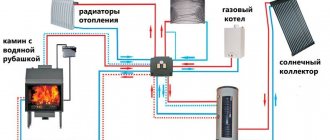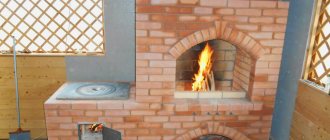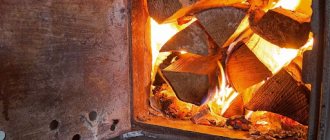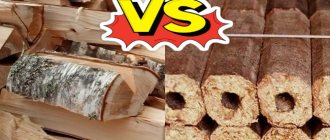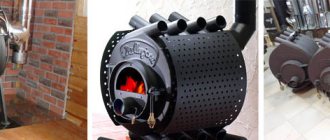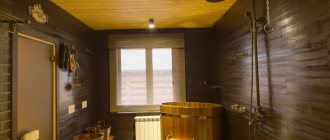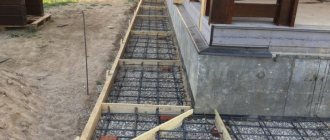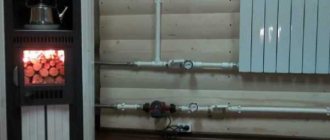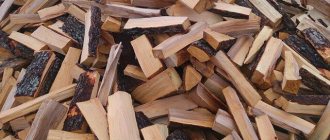It is better to heat the stove with wood or briquettes or coal. Heating with eurowood
I would like to immediately note that ordinary firewood and modern briquettes are a priori different types of fuel, although their operating principle is identical. (Fuel briquettes are closer in nature to coal.) Ordinary firewood has been used for a very long time, but European firewood still has to prove its worth.
By the way, fuel briquettes received the original name “Eurofirewood” due to their similarity with classic firewood both in shape and technical characteristics.
Modern fuel briquettes are produced from food and natural waste. Wood (sawdust, shavings, wood dust, branches and even leaves), straw remaining after processing grain crops (wheat, rye, corn), husks and husks of seeds, nut shells, peat, and in rare cases even manure are actively used. When burning this kind of material, no harmful substances are released for humans and the environment. No other ingredients are added to fuel briquettes.
Fuel briquettes from various materials
Carefully prepared and crushed raw materials are subjected to temperature pressing, during which excess moisture is removed, the material is held together, and becomes dense and strong. Depending on the type of production, all fuel briquettes can be divided into three classes:
- The simplest one is Ruf fuel briquettes.
- More advanced - Nestro fuel briquettes.
- The most modern are Pini-Kay fuel briquettes.
These types of fuel briquettes differ in shape, final processing method (sometimes there is firing to give the final shape and protection from moisture), level of density, which largely depends on the shape of the briquette itself. The composition of Eurowood always remains the same, without adding third-party elements.
Why is Euro firewood so good? Let’s look at its main advantages:
- Created by pressing at high temperatures, Euro firewood has high density and low humidity. That is why the burning time of fuel briquettes is much longer than that of firewood. The level of heat transfer from briquettes is twice as high, which is explained by the same technical characteristics. Ordinary firewood, dried during the year, has a moisture content of about 20%, fresh wood 40-50%, and for fuel briquettes the same figure is 8-9%.
- Made using professional equipment, having the correct shape and good packaging, fuel briquettes are more compact, convenient and easy to store. At the same time, as we have already said, they burn longer and give off more heat than firewood, which means the fuel supply may be smaller. Heating a house with fuel briquettes in Europe is considered a normal practice, moderately economical. In Russia, wood is traditionally used.
Fuel briquettes of the correct shape
- Using fuel briquettes is extremely simple; the technology for burning them is no different from ordinary firewood. You could even say that they are safer to use since the level of fire and its operation can be controlled.
- When storing firewood in the house there is always a lot of garbage, but the briquettes are tightly packed in cellophane and loaded into the oven entirely.
- Eurowood burns with a stable fire, it does not spark or smoke, and the amount of smoke emitted can be called minimal. By loading briquettes into the oven in various ways, you can regulate the intensity of fuel combustion. A small amount of smoke allows you to save on cleaning the chimney from soot, and also allows the use of such fuel in black baths.
- After using fuel briquettes, very little ash remains, approximately 1% of the total volume of fuel. Unlike firewood, briquettes burn almost completely.
- With proper skill and suitable equipment, you can make fuel briquettes with your own hands. At first glance, the task seems impossible, but upon detailed analysis everything turns out to be very simple. In the future, such production will help significantly save the budget on fuel.
Material of manufacture
Copper. Due to its ductility, copper is most optimal for the manufacture of a heat exchanger. A copper tube is easy to bend and give any shape. It has a high thermal conductivity coefficient - more than 380. But copper is also not a heat-resistant material and is expensive. Stainless steel. Also quite flexible and responsive material. Although it has a lower thermal conductivity coefficient. But it is resistant to temperature changes. You can weld any configuration from it
IMPORTANT: Galvanized steel cannot be used; when heated, it releases toxic zinc compounds into the air. Metal-plastic. Easily available practical material
Easily found, but it has a low thermal conductivity! Almost two orders of magnitude lower than that of copper. But this material is durable and resistant to temperature changes.
How to heat the stove to clean the chimney. Methods for cleaning a chimney
If there is only a little soot, it can be removed with potato peelings or salt.
Before cleaning the chimney pipe from soot, you should choose the appropriate method. There are only three of them: mechanical, chemical and manual cleaning.
With a mechanical method, a brush is inserted into the chimney, which knocks soot off the walls. This method cannot always be used, since not every pipe has good access. In addition, the entire contents of the pipes are poured down, after which the garbage must be removed.
The chemical method uses powders and logs. They are placed during the fire. Under the influence of temperature, substances are released that soften the soot and it flies into the pipe or falls down. It is better to use such products for prevention when there is little soot deposits.
Traditional methods are also used to clean pipes. The problem of soot formation is dealt with with salt or potato peelings.
If professional cleaning is required, you can contact the fire department and call a professional. The quality of work will be at the highest level, but you will have to pay for the services.
Mechanical cleaning
A brush with a weight for cleaning the chimney from the roof
This method of cleaning pipes involves the use of additional means. The most common devices are brushes. They come in different diameters for specific chimneys. The brush-ruff is placed on the end of a long and flexible cable; a metal ball can be attached under it for easier passage down. The structure is lowered into the pipe and raised, as a result, soot is cleaned from the walls.
Before you clean the chimney in the stove with your own hands, you should take care of technical safety. When working on a roof, you need to provide insurance to avoid falling. Gloves, goggles and respiratory protection will also be required. A respirator is needed because when cleaning, small dust particles are formed that get into the mouth and nose.
Not every type of chimney can be cleaned from the roof. Sometimes you have to clean a chimney made from sandwich pipes. In this case, cleaning from below using a brush on a flexible hose is required. Professional pipe cleaners use special vacuum cleaners to collect soot that falls off during work.
Before cleaning the chimney pipe in a private house, you should first place a container in the fireplace into which combustion products will fall.
Dry cleaning
Chemicals for soot removal
If the chimney in your country house is not too clogged, you can use various chemical compounds to remove a small layer of soot. If the chimney pipe is brick, such substances will allow mechanical cleaning to be done less frequently. As an independent cleaning product, they are used for chimneys made of ceramics or stainless steel.
Periodic use of chemical cleaning of soot from chimneys of stoves and fireplaces makes it softer, after which the residue is easier to remove mechanically. The combination of these two methods will keep the chimney free of plaque for a long time.
Among the most popular means for cleaning pipes from soot are the following:
- Kominichek. This is a Czech drug that is sold in paper bags in the form of granules. Place the bag on top of the wood in a preheated oven without tearing it. During the combustion process, substances will be released that will effectively clean the pipes. Recommended for use when the soot layer does not exceed 2 mm.
- Log. They are produced under the names Chimney Sweep and others. Boxes will vary in appearance depending on the manufacturer. The rules for use are the same - the log must be placed in a well-heated oven. During the combustion process, smoke will be released, softening the soot. It will evaporate or fall down.
- Powders for cleaning pipes. Available in the form of packages with prepackaged powder. The package should be placed in a hot oven. There are both domestic and foreign production.
After using chemical cleaning methods, you should check the room. The fireplace or stove must be cleaned of any remaining loose soot. It is important to note that soot may still fall off over the next few days.
Traditional methods
Aspen logs burn soot, but they are used only for prevention, so that if there is a large deposit of soot, a fire does not occur.
If it is impossible to clean the pipes mechanically or chemically, you can use folk remedies. The simplest of them is heating an already heated stove with aspen wood. The flame from them is hotter, the soot burns instantly. But this method cannot be used if there is a large deposit - soot can explode and damage the chimney. Therefore, before cleaning the chimney, you should inspect it. Aspen is recommended for use for prevention. When lighting, it is enough to add a couple of logs to the regular fuel.
There are safer ways to clean a chimney using folk remedies. Place a kilogram of table salt or a bucket of potato peelings into a hot and heated oven and heat it. They should first be dried so as not to lower the temperature in the firebox. The effect of the products will be milder than that of chemical drugs.
Building a boiler with your own hands
When working with metal, it is important to follow simple safety rules.
Project selection
For a home craftsman, a real challenge will be to independently manufacture a “Buleryan” type heater, but with patience and metal welding skills, this task is doable.
To create a device for heating water, you will need a square profile pipe with a wall thickness of 4 mm. During work, a welding machine, grinder, clamps and other metalworking equipment are used.
In addition to the square pipe, you will need several sheets of iron for the second chamber and doors, a valve, a pipe for the expansion tank, plumbing threads for the outlet and input of coolant.
The procedure for welding a hot water stove using wood
First of all, the collectors are welded: lower and upper. The lower one has the shape of a “box”, the entire structure will stand on it, the upper one is of any shape and serves as an expansion tank.
The heat exchanger consists of L-shaped square or round pipes bent in the form of a clamp. Their bottom is connected to the manifold, the top to the expansion tank. The gaps between the pipes are welded tightly with sheet metal.
A secondary combustion chamber is installed at 2-3 heights of the resulting tunnel. Hot gases rise along the hot shelf. It is better to make it from metal 5-7 mm thick; air ducts are connected to the beginning of the shelf.
A grate is installed at the bottom of the firebox.
The ends of the tunnel are welded, a chimney is mounted on the back wall, and doors and an ash pan are hung on the front side.
It is convenient to make the ash pan in the form of a removable scoop: this makes it easier to clean the stove.
The legs are welded, handles and wheels are attached - the stove can be transported like a wheelbarrow.
The stove is ready, now you can connect the chimney, fill the system with water and do a test run.
What is the most economical heating in a private house if there is no gas? Organization of economical heating
There is no need to have a long debate about which equipment from the listed options best combines economy, efficiency and safety. It will be much more practical to use one or another option in the most suitable conditions. Below are the basic principles that should be followed to create economical heating with electricity at home:
- The first rule is common for systems powered by gas and electric - minimize heat loss by insulating the walls, ceiling and floor. Thanks to this, you can reduce the required heating power to maintain temperature. Of course, additional costs are necessary for this, but they are compensated by savings on electricity. The temperature inside an insulated garage in winter rises above zero within half an hour if a car is running inside. In an insulated house, you will only need to maintain heat, and not constantly pump it up, forcing the equipment to work at increased power.
- Design an optimal electric heating system. For example, an electric boiler can be quite effective for heating a small one-room apartment (if the heat loss is very small). But for a house with many rooms this is not the best option. Here it is more convenient to install a convection system with thermostats that control the climate in each room. Infrared panels are good for a garage, closet or utility room that does not need to maintain a constant temperature.
- In rooms and houses that are not used throughout the day, it is optimal to combine electric heating equipment. As an example, let's take a kitchen with a main convector and an auxiliary IR panel. The convector allows you to maintain a minimum temperature throughout the day, and turning on the panel before the evening meal will quickly warm the room for a comfortable dinner. In a similar way, you can arrange the heating of a bathroom, outbuildings or a heated garage.
- Thermostatic automation allows you to accurately adjust the temperature. Depending on specific models and devices, you can set “hot” and “cold” periods, use photo sensors to make the room warmer when people are present, and apply other settings. All these seemingly insignificant little things can greatly help in reducing costs.
- A large share of heating system consumption occurs at night, when all residents are at home. You can significantly reduce bills for this period by switching to two-tariff electricity metering. The night rate is usually 3-4 times lower than the main rate. To replace the meter and switch to new metering rules, contact your local energy supply company.
The conditions for ignition of water are the key to the secret of “spontaneous combustion” of a person
1. Not just water burns, but salt water burns, i.e. water system .
2. Water burns if it has also been irradiated, for example by a powerful Wi-Fi source/antenna
"The water is burning
" - this means that water, under the influence of irradiation, splits into oxygen and hydrogen, and hydrogen burns in oxygen.
The source of hydrogen and oxygen is water itself. “In water, in addition to H 2 O ,
there is active oxygen
D 2 O , H 2 O 18
molecules , salts, quasi-polymers, etc.
is always a water system. And organisms are aquatic systems. Salts act as a catalyst for the combustion of water. Radio irradiation is a catalyst for the combustion of water. And there are other catalysts. If you add an additional source of oxygen to the water - hydrogen peroxide -
then such water begins to burn even without irradiation.
Although such combustion - combustion without powerful irradiation by a radio field - cannot be seen with the eyes, its flame can be seen using a light detector: see the release of a photon of light with energy. The chemical reaction of oxidation with the release of light is combustion.” The professor also said that drinking water was lit with peroxide in October 2008 and the combustion initiated by peroxide was stopped only in January 2010: “Water with peroxide burned for a year and a half due to the fact that when water burns, water appears as a result: “other water
"
And thanks to the internal energies of water and the igniting infrared radiation of the environment, which always takes place, the water again becomes flammable. And the water burns again, restoring itself like a “phoenix.” “Only in recent years has there come an understanding that there is no such thing as water, that water has many different forms, and this diversity of water allows it to be a source of energy and life itself.” of “ other water
” as organized water. The professor calls “other water”: “Water System”, “Biological Water”, “Fourth Phase Water”, “Charged Water”, “Jelly Water”, “Border Water” and “Matrix of Life”, explaining these qualities in detail. “When breathing in a cell, peroxide and reactive oxygen species are always produced. The oxidation of “split water hydrogen” by active oxygen—the combustion of water—constantly occurs in human blood. The transition of water in the body from one state to another is a source of vital energy,” says the professor as a discovery of the 2000s.
I’ll add from myself:
- In addition to the fact that a person is constantly always and everywhere under the influence of incendiary infrared radiation and also incendiary natural radio fields, a person is now constantly under irradiation of radio fields artificially created by antennas, the power of which is increasingly increasing due to the progress of technology. Exposure to radio fields and inaudible ultrasound in a “fight” with neighbors is also not uncommon, and there are first-floor apartments in new buildings located directly above the transformer substation in the basement of the building. Irradiation with radio fields splits the water of organisms into hydrogen and oxygen, and thus organizes combustion, which can be felt at first as a burning sensation on the skin.
- The burning sensation that a person feels is burning. If the burning flame is not visible to the eyes, this does not mean that it does not exist. Flames, like photons of light, can be seen using a photon light detector.
- The catalyst for human combustion is not only irradiation with radio fields and additives: salts and peroxide formed during breathing, but also a condition when a person experiences acidosis, which is typical for drinkers, the elderly, diabetics, supporters of the keto diet and gourmet meats. Acetone acidosis with peroxide creates a powerful combustion initiating substance. Many in V. already have pathology in the form of burning of the skin or in internal organs. Pathologies in the form of a burning sensation - “spontaneous combustion” in the age of increasing radiation exposure will most likely increase, which you should be aware of, among other things. and ordinary citizens.
